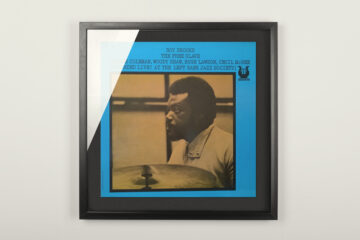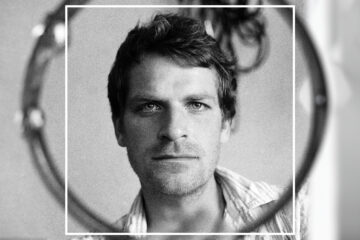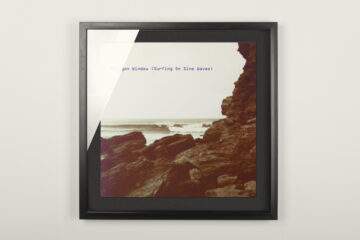We’ve been told it was a time that could be considered almost Neanderthal. Cloning sheep was still a big deal. The euro was still slumbering in non-existence. Notting Hill had not been gentrified. Cell phones were carted around in cases weighing a ton with a battery the size of a petrol can. Friendships were still cultivated face to face. And the Internet, indeed, was a largely unexplored space. In other words, it was a time when the wisdom of the world still slumbered away in metre-long encyclopaedias gathering dust in enormous shelf units and rare records couldn’t be just found with just a couple of clicks or swipes. Thomas Ulrich found himself surrounded by this desolate scenery at the end of the 1990s.
Tom and his circle of friends preferred to spend all their time surrounded by records. They listened to and collected and loved them. Collecting and exchanging records gradually turned into a passion and eventually a business. Hip-hop from the USA, outside the mainstream, was hard to come by, in particular on vinyl. Especially not at a fair price. The idea to change all that was the starting point for what is now HHV.
The beginnings: »Learning by doing«
A short time later, Tom became a phantom. He disappeared from parties without a trace, in the middle of the night, to bid on offers from online auction houses that were growing in popularity. From then on, the vinyl was also brought in from overseas. In 2002, a website was set up under the URL www.hiphopvinyl.de, from where his acquisitions on vinyl could be viewed and ordered over Excel-based lists. A business was registered from Tom’s living room and parcels were sent out all over Europe.
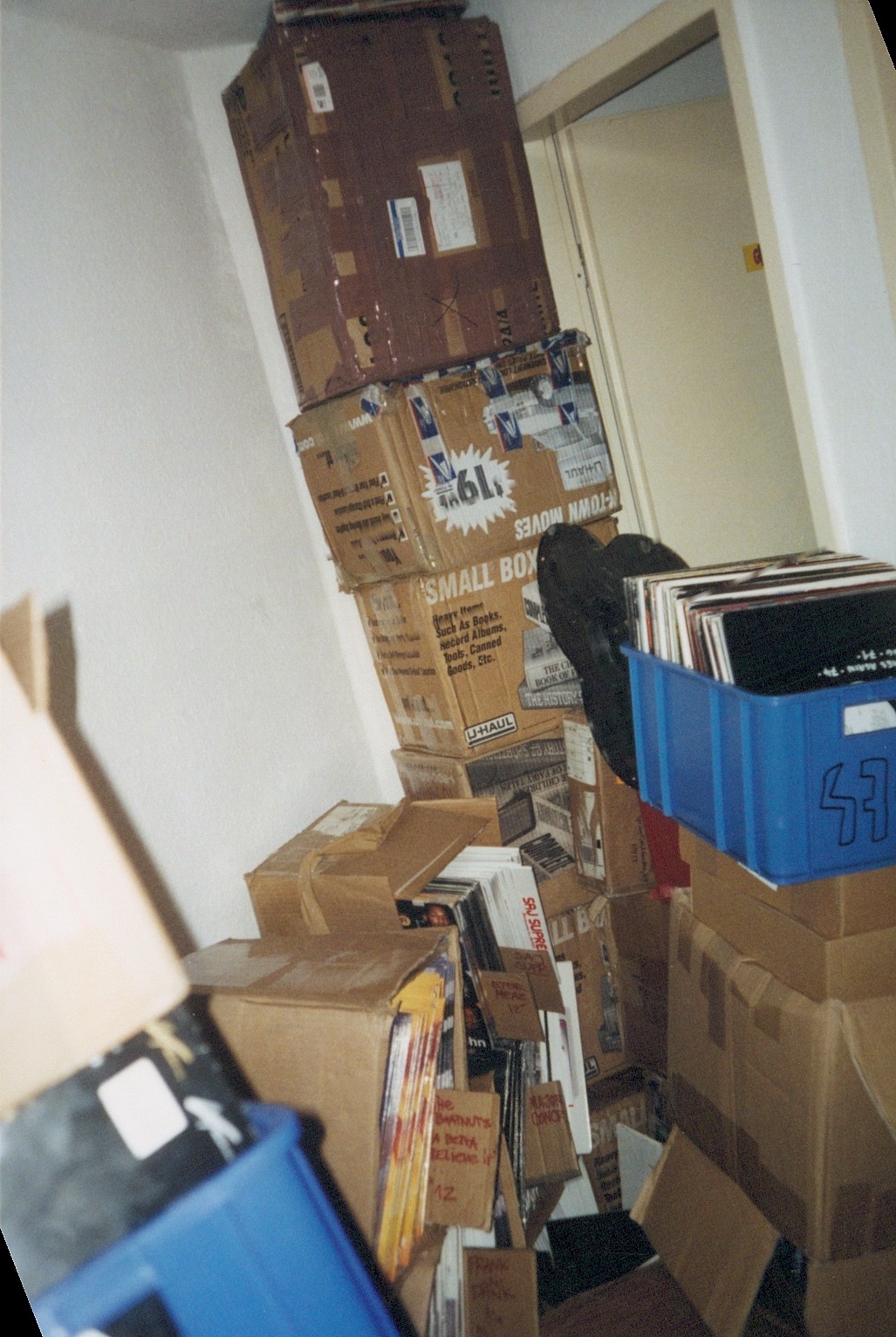
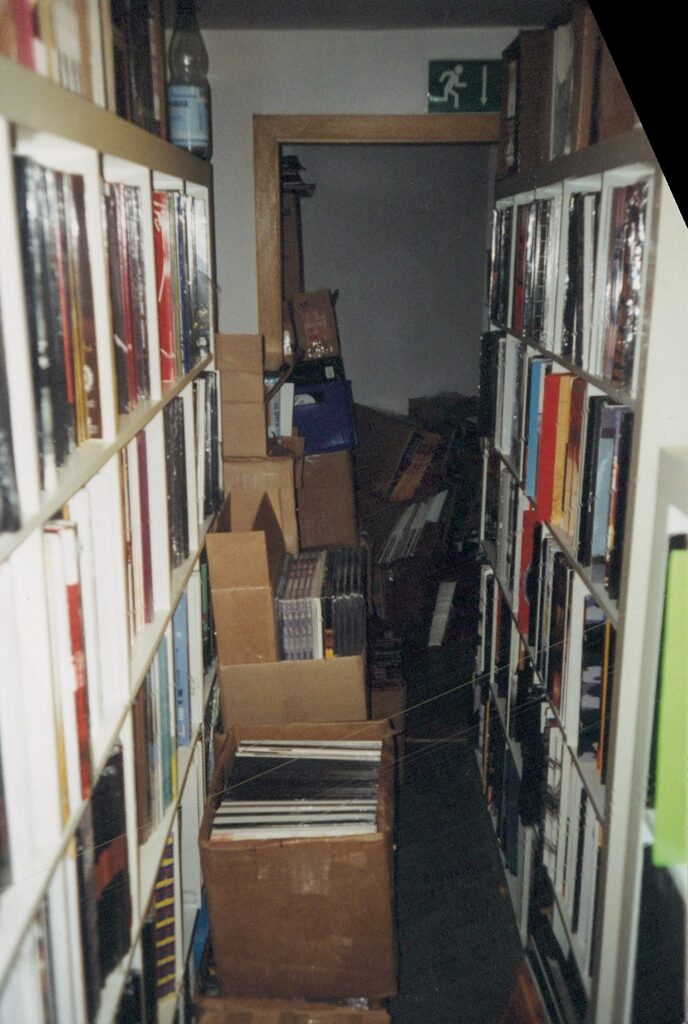
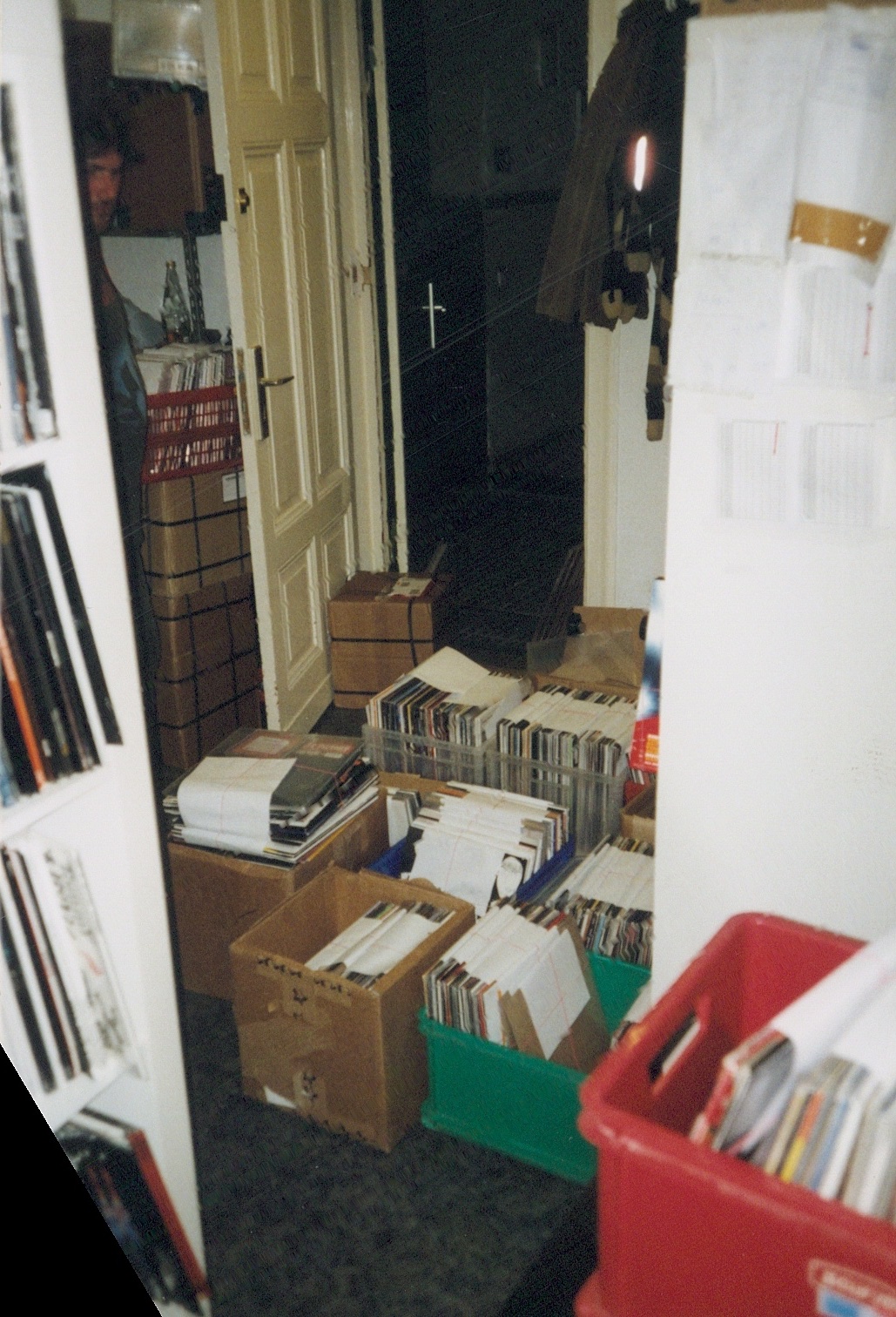

The first employees followed, recruited from his circle of friends and regular customers. A particular passion was the distribution of »underground hip-hop« from the USA. Respected artists like the Living Legends and the Hieroglyphics, as well as record labels like Rhymesayers and Stones Throw, were given the opportunity to gain more attention in Germany.
At the beginning of 2003, the first shop was opened in Niederbarnimstraße 4 in Berlin-Friedrichshain, which served as a regular record shop with larger storage facilities, but which now also did more and more online business. Step by step HHV continued to grow and develop. The initial Excel lists gave way over time to more professional databases. And necessity became a virtue.
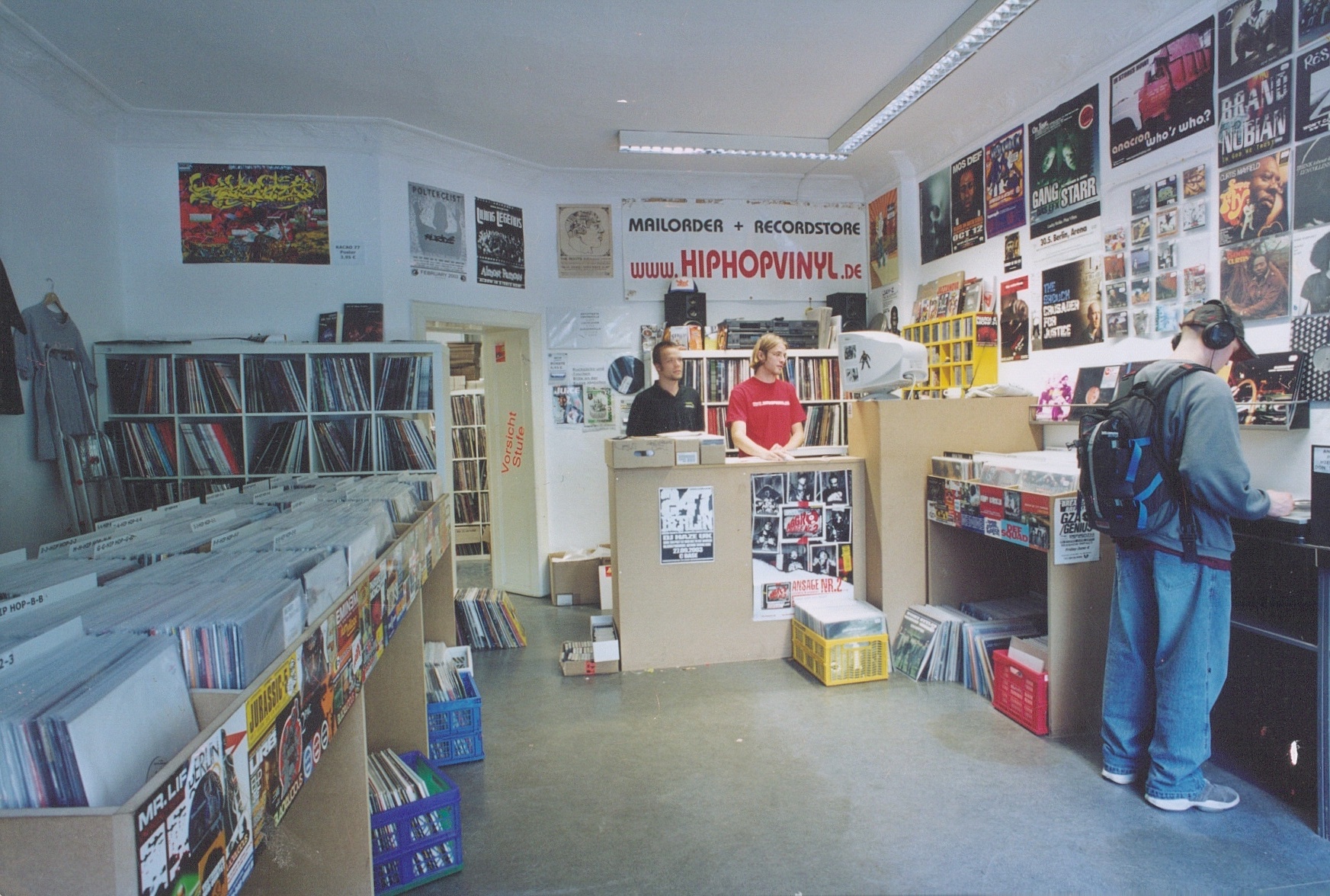
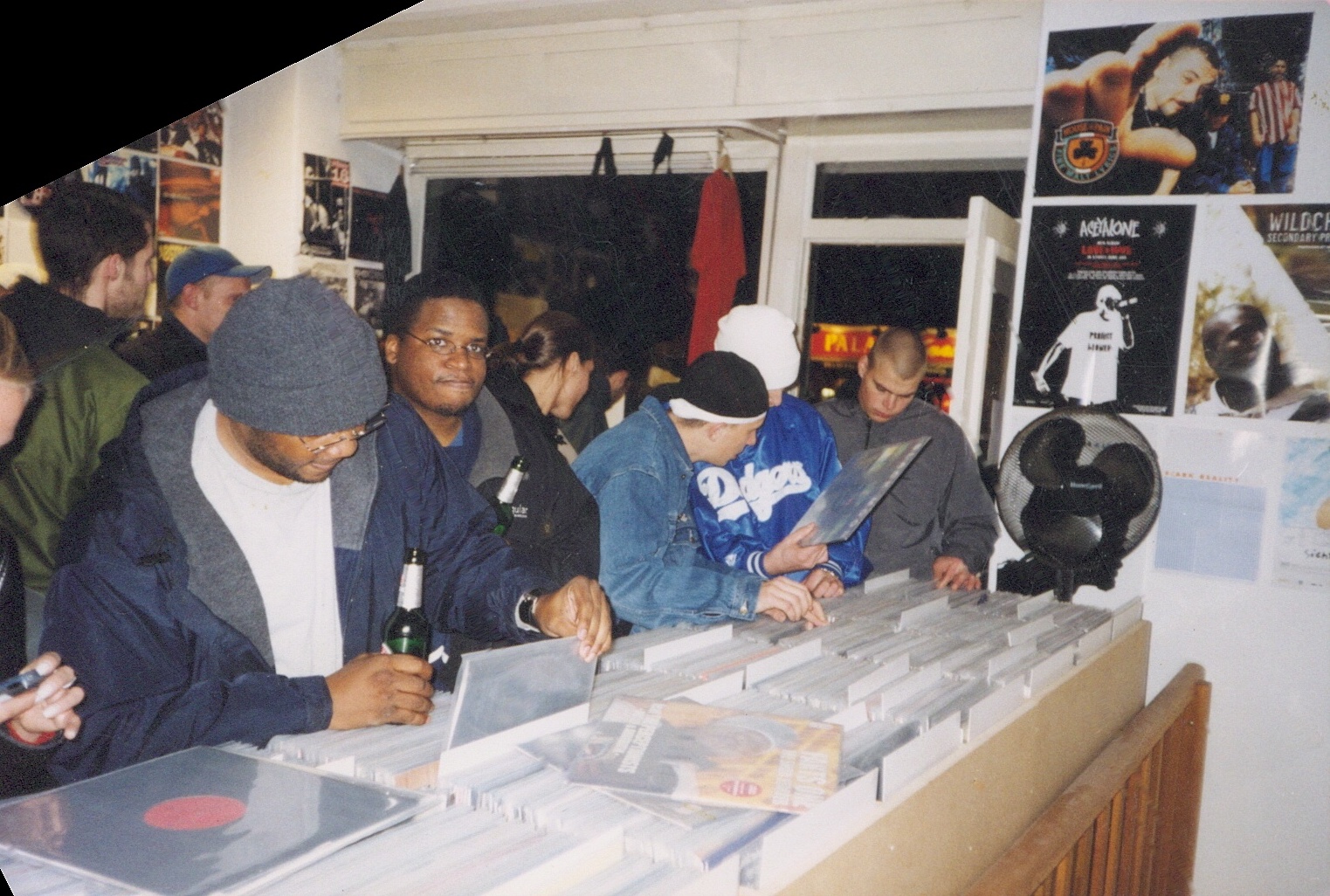
Decisions were made with the entire staff at a grass-roots level and things moved forward together, step by step. »We always made sure that the shop didn’t grow too fast,« recalls Thomas Ulrich. Promotion and advertising also took place on a small scale. The staff busily handed out shop flyers at all the important gigs in the capital, while Tom cleaned out the merchandise stands.
This is how they started selling street wear on the side along with the band t-shirts they had bought. When it came to marketing, however, the Internet soon proved to be a self-starter of a completely different order of magnitude.
What’s the deal?
At the 2003 Splash! Festival the team experienced the larger magnitude of their business(es) up close for the first time. The merchandise they brought with them, which they sold at a small makeshift record stand, sold out completely on the first day, so that supplies had to be ordered from the Berlin warehouse to be sent to the festival on the same night.
A short time later, the idea came up to expand the range of rap music to include soul and funk. As so often in the history of the company, this move forward was less calculated than guided by our own interests. The staff’s taste in music simply got broader and broader over the years. This is now reflected in the music offered. More and more genres found their way into the repertoire. From then on, the selection criteria were no longer based on style, but increasingly determined by quality. With the ever-growing inventory of vinyl and the increasing sales of band merchandise, a paradigm shift also took place: What started out as a »neighbourhood thang« became a national phenomenon.
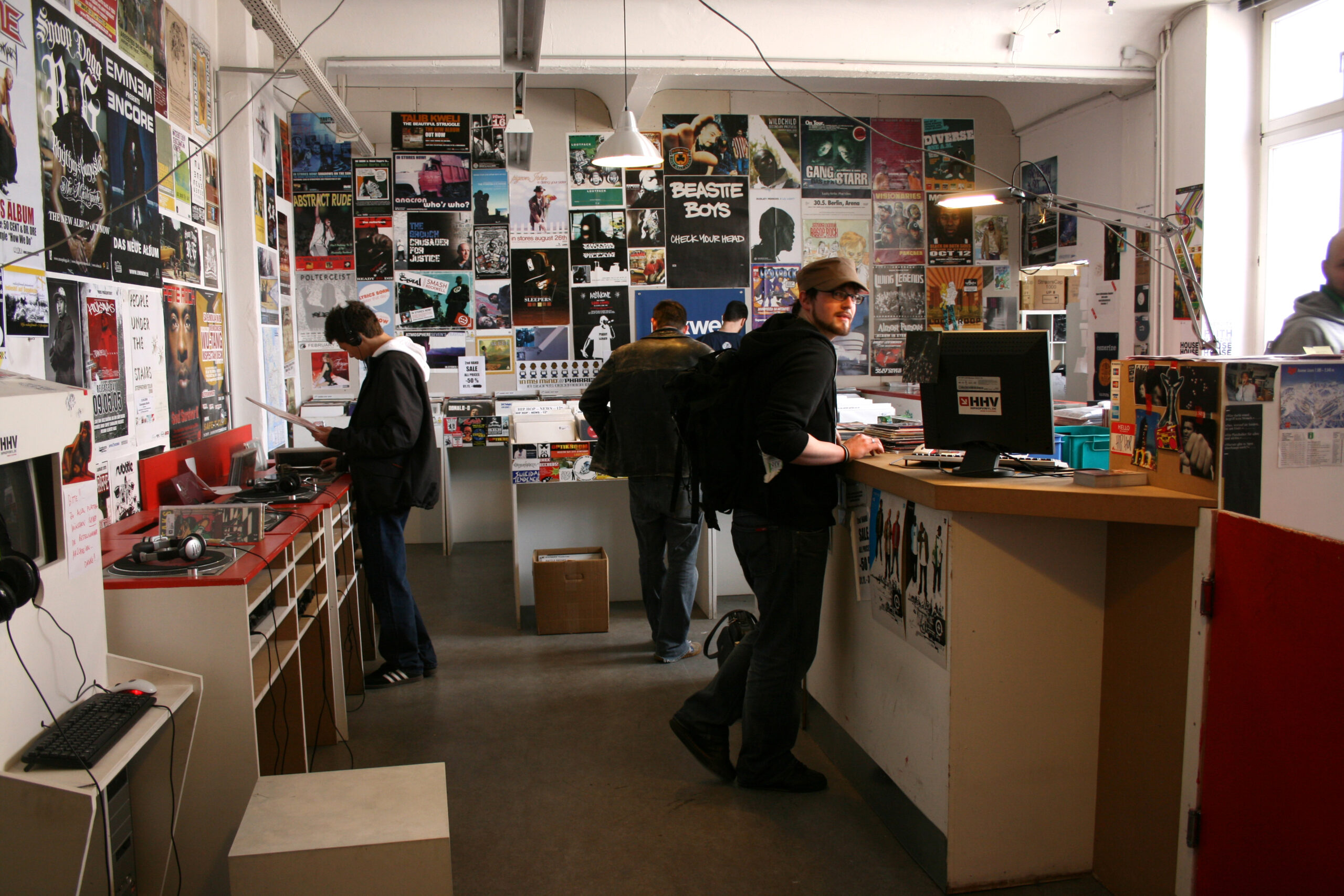
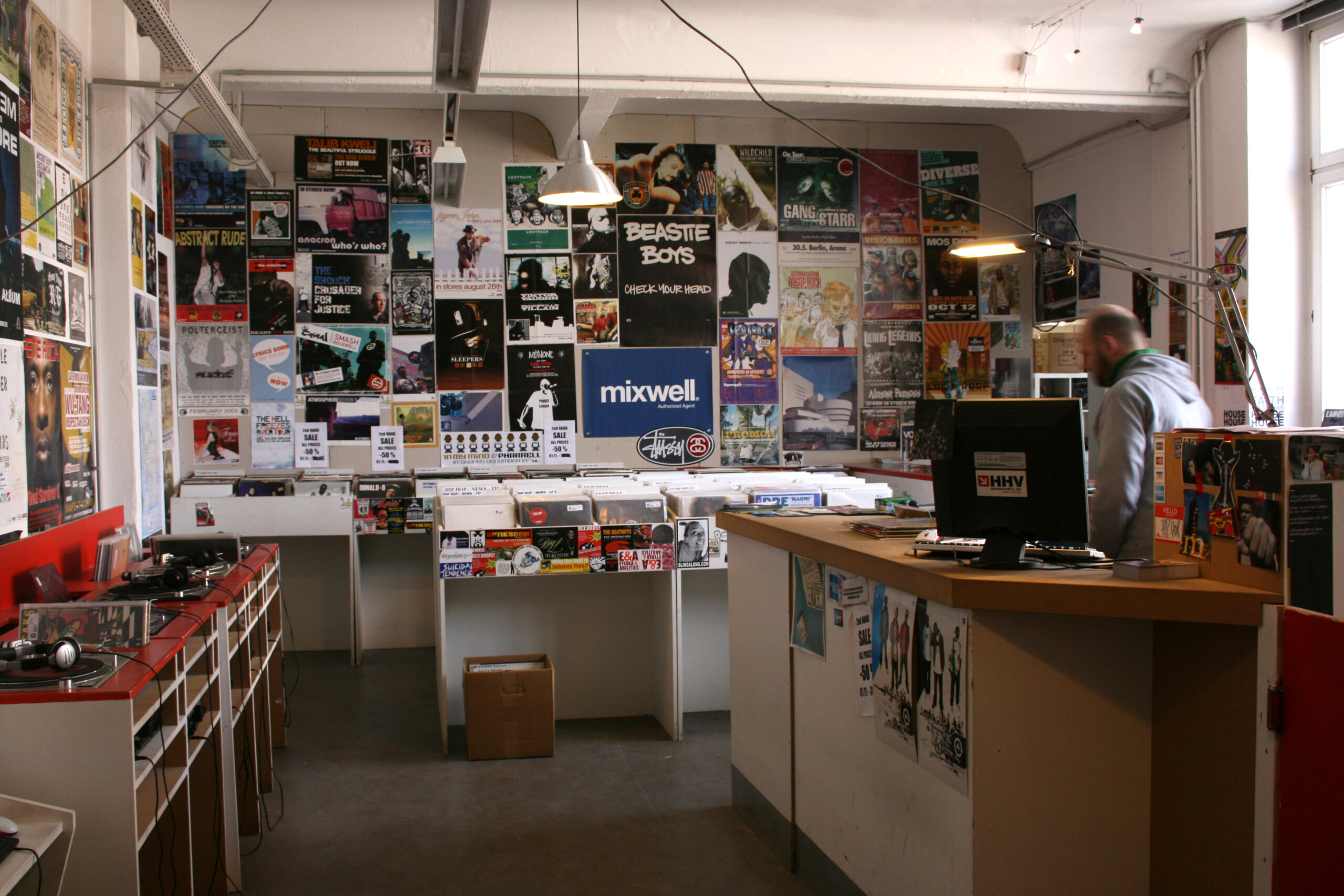
In addition, HHV opened up another avenue at the end of 2003 to live out their passion for good music. The release of the tape »Funkfurter Tor« by Pilskills, a hip-hop band with close ties to the company, was a first tentative attempt to establish a record label. This idea was given tangible substance by integrating the label Project: Mooncircle into the fabric of the company.
The second record release soon followed. The 7” »Phuk die Beeatch/Sonnenzschein« by Taktlo$$, limited to 500 pieces, sold out within two weeks. Between then and now, more than 800 releases have been issued by artists such as Masta Ace, The Doppelgangaz, AzudemSK, Shacke One, Dexter or Twit One. Imprints and series such as 90’s Tapes, Beat Jazz International, KEATS and Boombap 45s were successively added to the label family.
if you are looking for HHV’s recipe for success, you will find it in our passion and love for the cause, which we have preserved over the years.
The first catalogue appeared in printed form around that time, or maybe a little later. Duplicated in B&W in the copy shop around the corner and bound with a staple, it went out to the customers. The catalogue was out of print within a few days and it had to be reprinted. Luckily, we knew the way to the copy shop by now. By the next catalogue, however, not much was left of the »do-it-yourself look« of the first one.
In the style of a magazine, the product catalogue was augmented with journalistic content and once again demonstrated the knowledge and passion that lay dormant in the HHV team. The magazine quickly proved to be an established institution, especially in the German hip-hop scene, and delivered articles by seasoned music journalists until 2012.
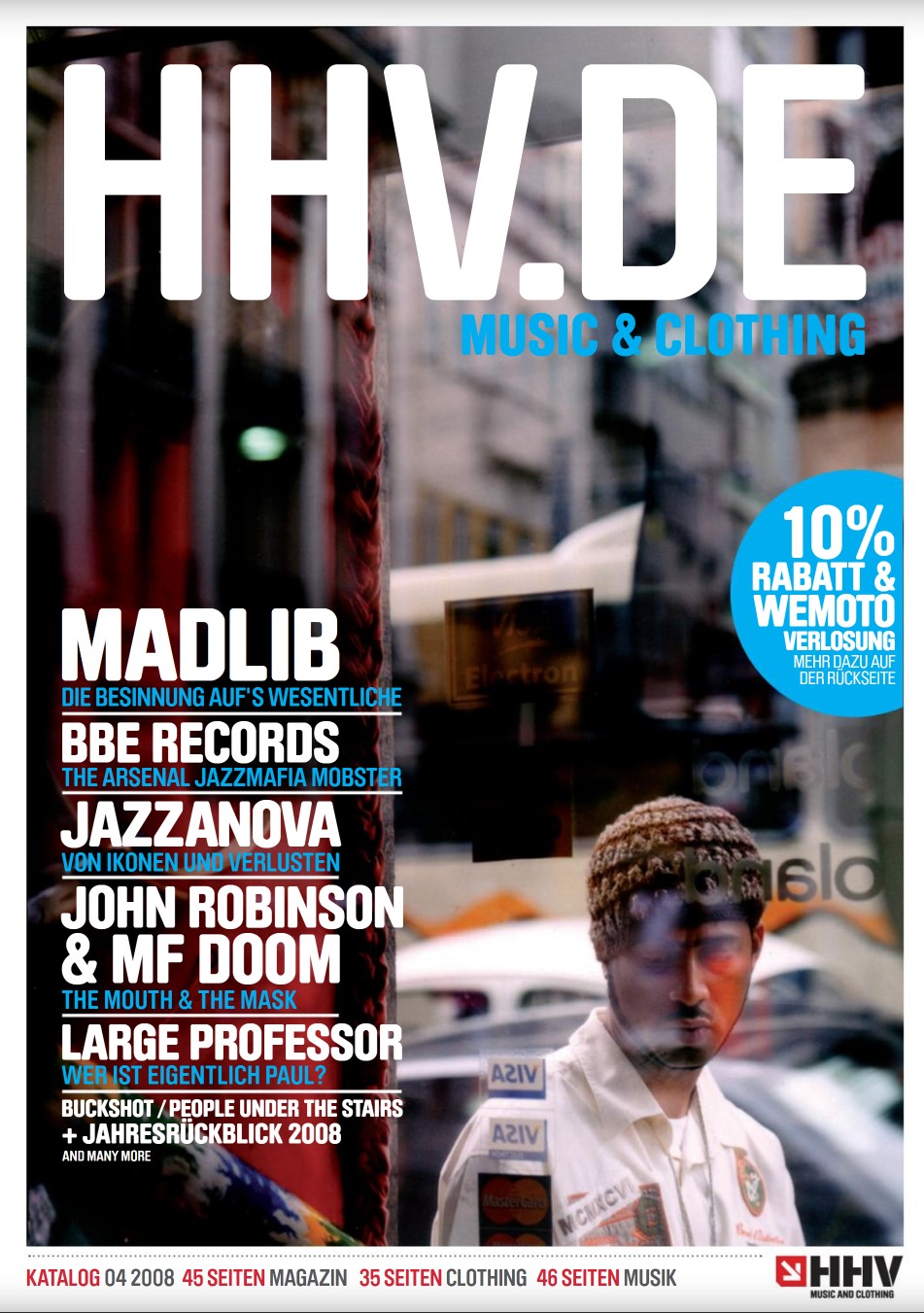
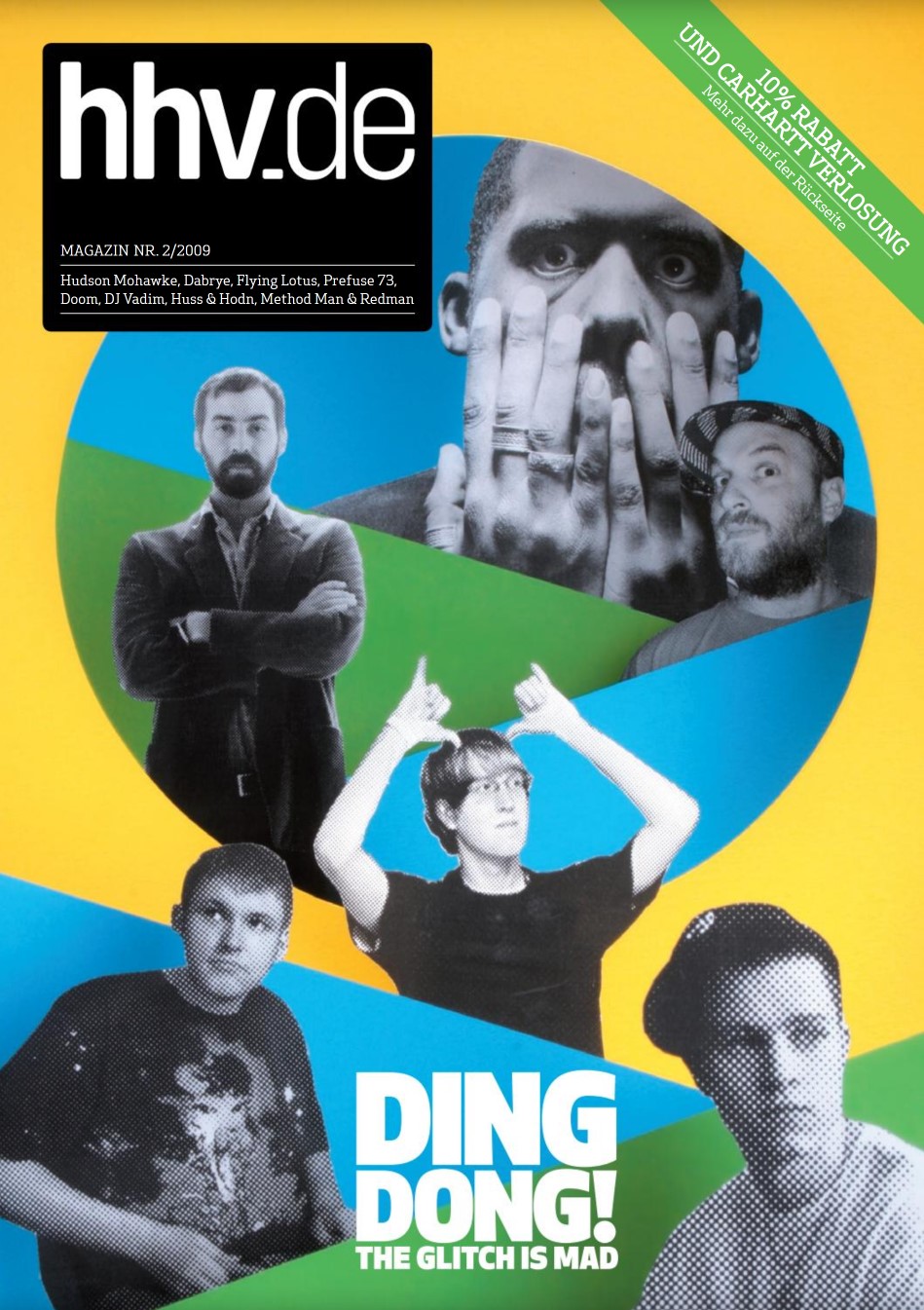
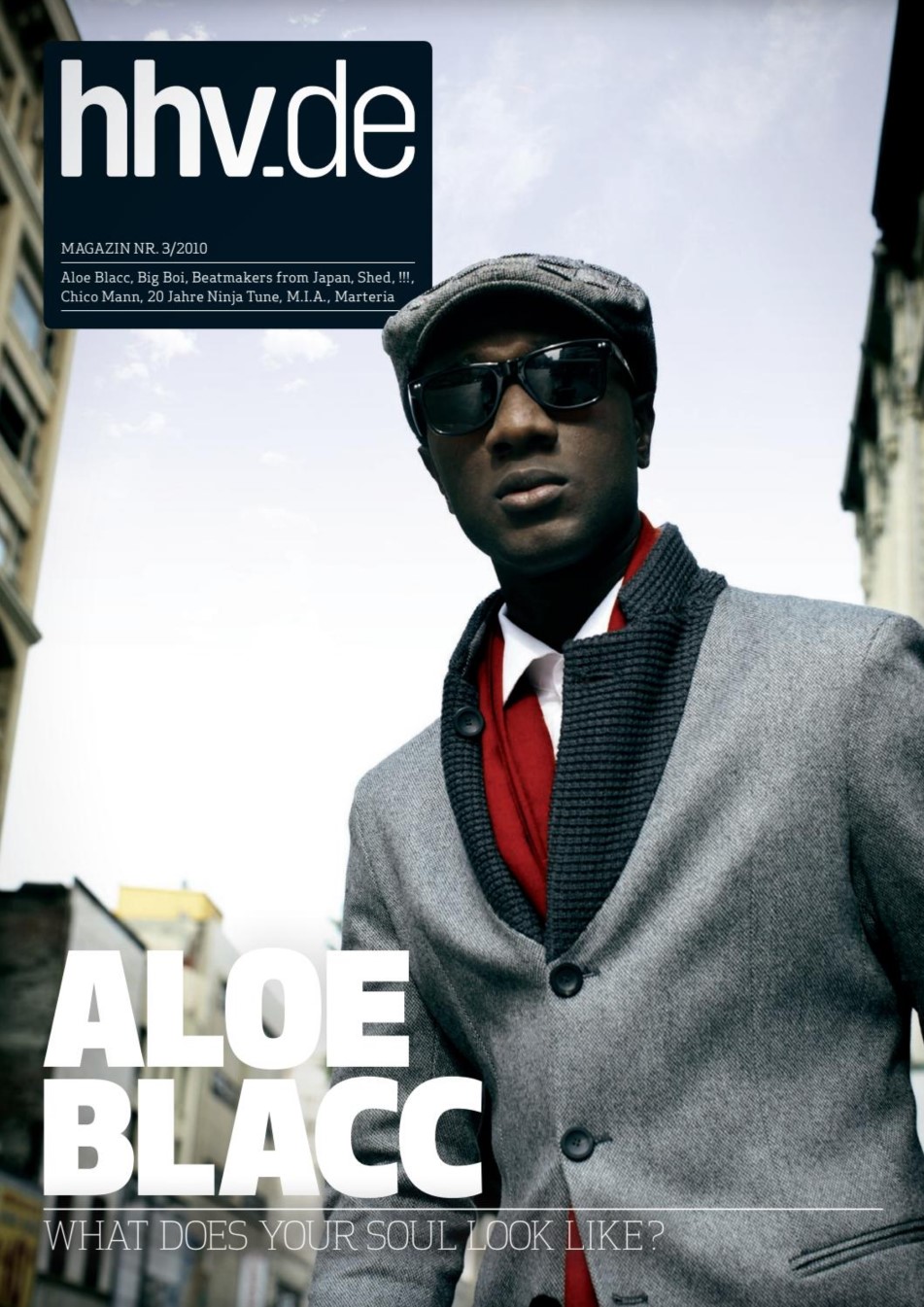
On one occasion, the delivery of the magalogue (hybrid of magazine and catalogue) had to be delayed because the record label Royal Bunker had placed an ad featuring smoking children, which was incompatible with the ethical principles of the print shop. In the meantime, the company itself was also placing ads in relevant magazines, which increased its level of awareness even further. The consequence being that the warehouse space in Niederbarnimstraße was no longer sufficient. The move to Grünbergerstraße followed in the summer of 2004.
Expansion through diversity
Now they got down to the details, and not without painstaking attention to detail. From this point onwards, the record covers for the sound recordings on offer were scanned, augmented with useful information and furnished with short audio samples. Entire machines were invented specifically for this process. No joke! And finally, a photo studio was set up to showcase the products.
This is how the whole thing was put together, brick by brick. The shop grew bigger and with it the staff, which had long since ceased to be recruited solely from circles of friends. In parallel to this development, the significance of clothing in the mail order range also grew. Our warehouse had become too small in the meantime, and so we expanded the logistics and moved into our very own spacious warehouse in Berlin-Friedrichsfelde in 2016, from where thousands of parcels have been sent to our customers every day ever since.
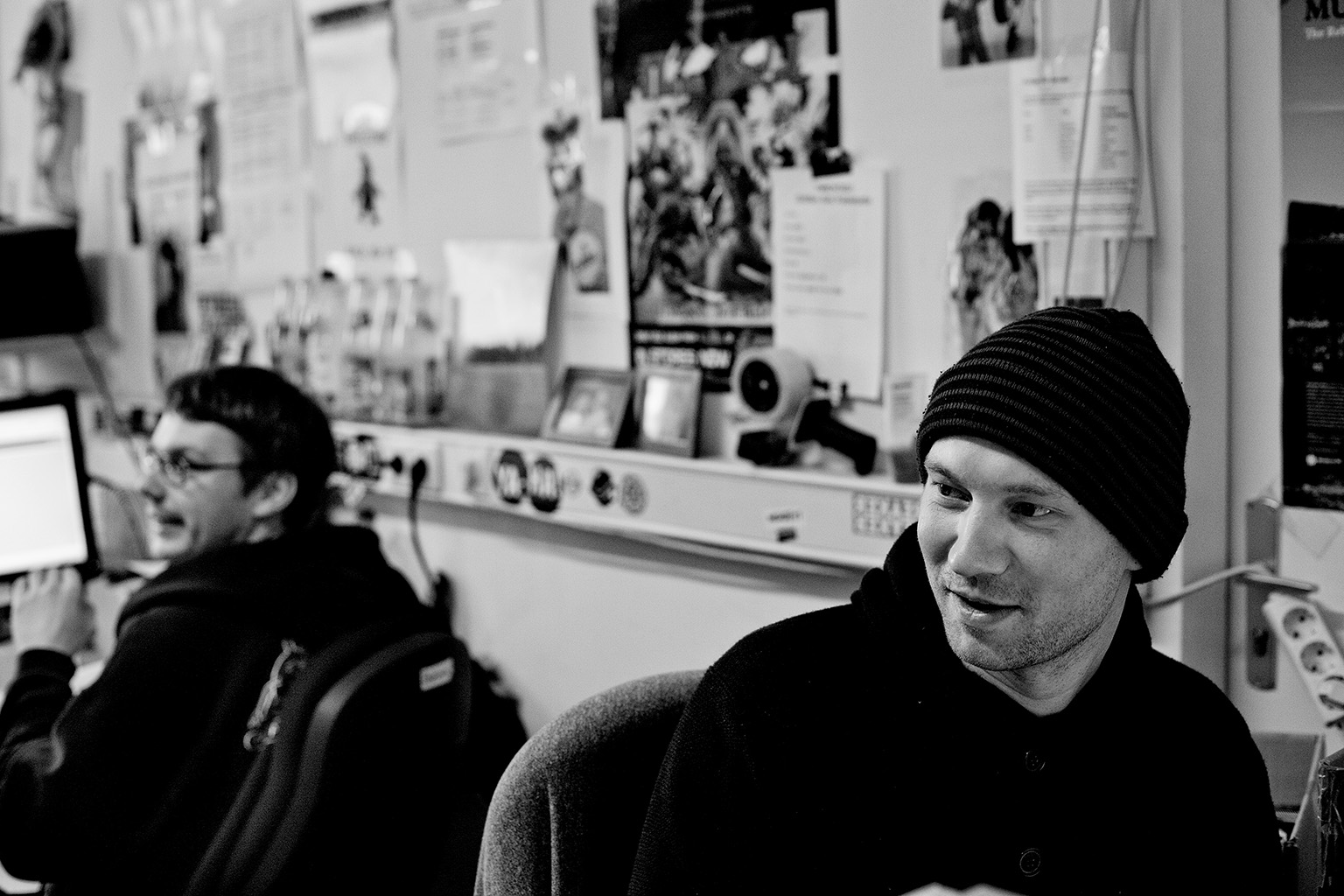
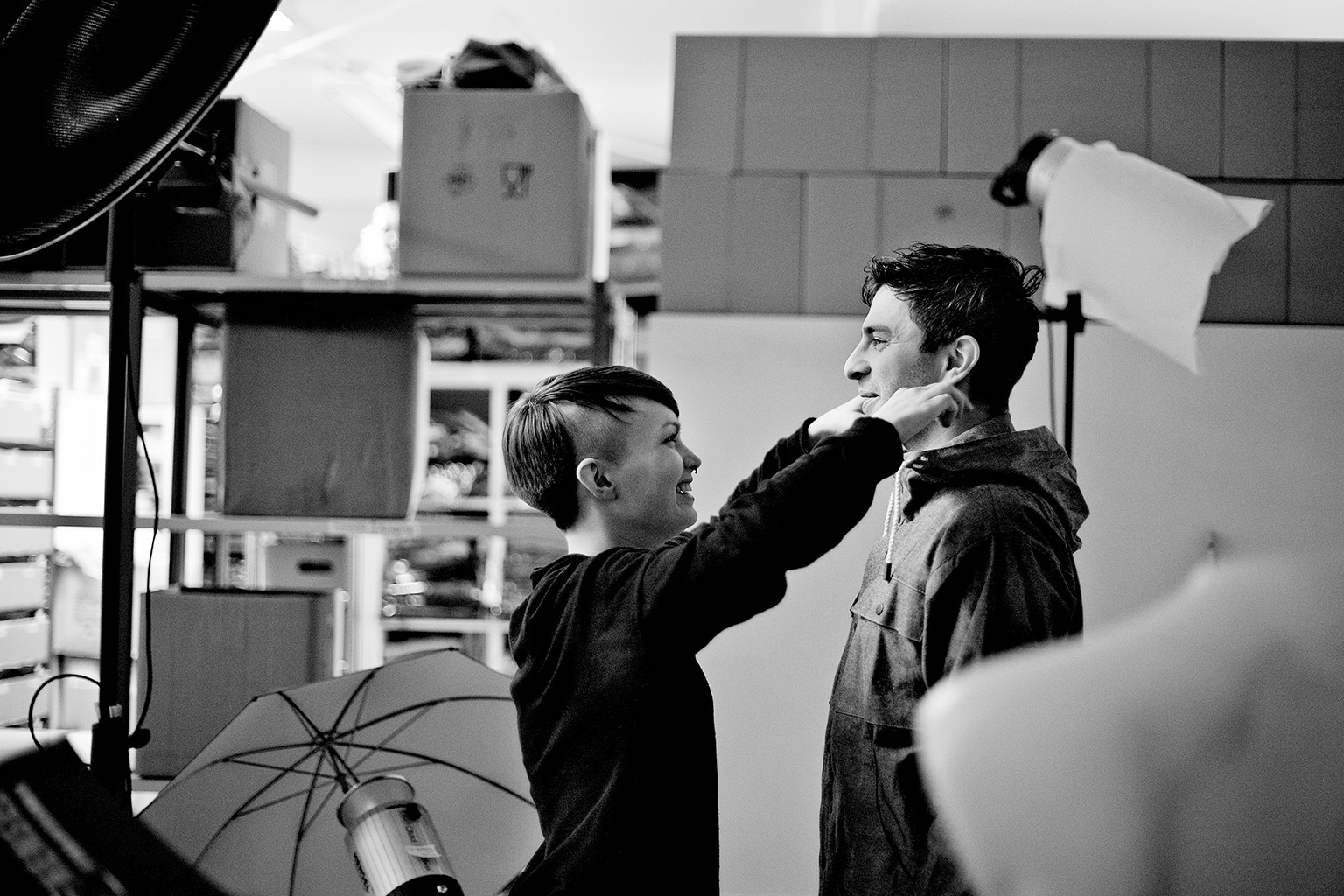
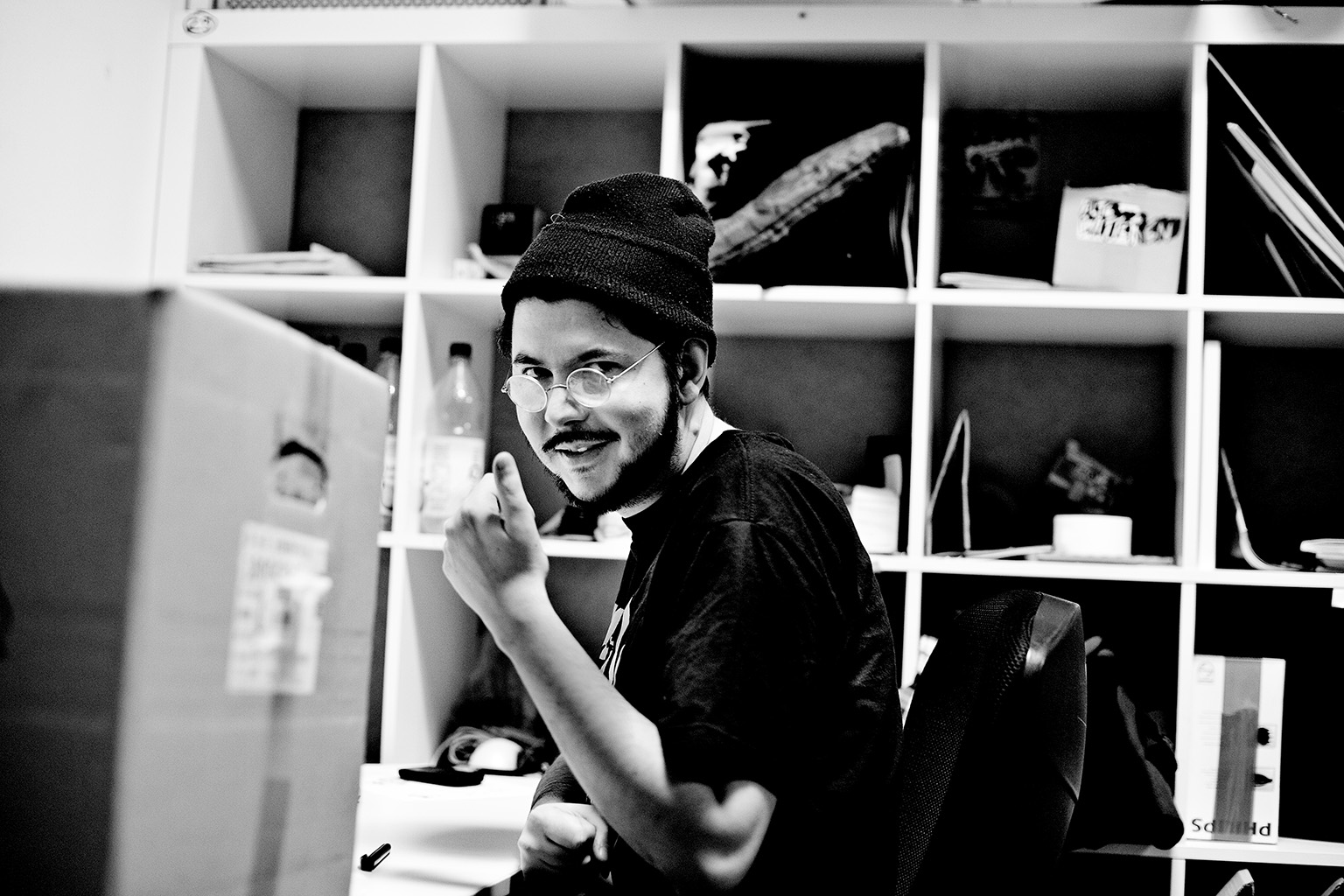
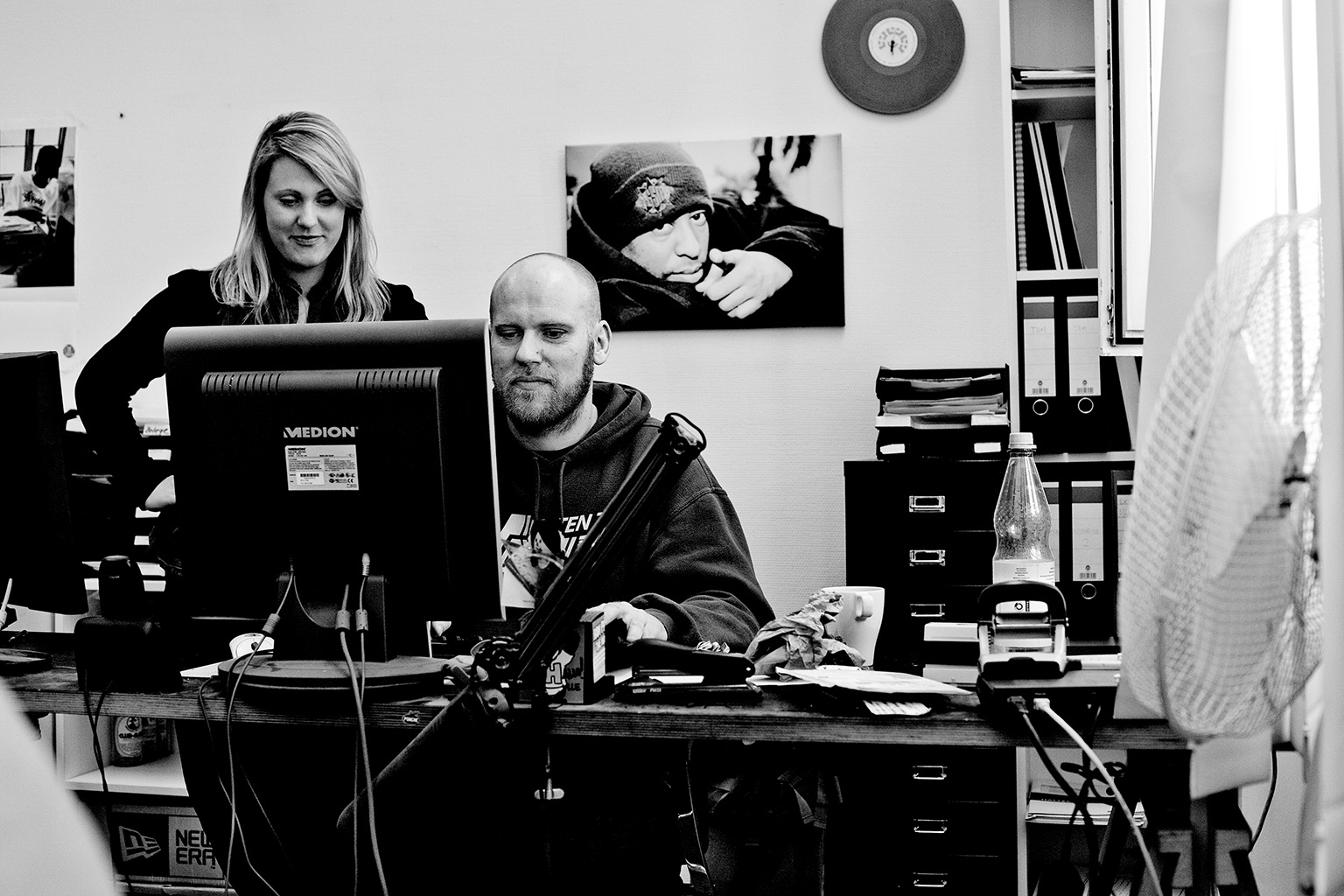
From a musical point of view, too, the company has long since ceased referring exclusively to the hip-hop culture and its musical fathers that once gave it its name. Today, the shop offers a contemporary range of all kinds of music on vinyl, which at the same time reflects the colourful diversity of the staff.
Fittingly, in March 2011 we added our online magazine under the URL www.hhv-mag.com, which gives an example of the versatility of the shop. Updated daily with news, reviews, events, reports, interviews and columns, this site presents an overview of relevant music on vinyl and the people behind it. The website now contains more than 10,000 articles. Much of the content is now available in English as well. In 2022, the site was relaunched in a completely new look.
But HHV does not only have something to say in terms of music. In 2019, the HHV Journal gave a home to the cultural significance of fashion – with news, features and stories on relevant brands, products and players shaping culture on the street. Since its launch, the site has also been writing about its own collaborations with major and local brands.
And back to Grünberger Straße
In 2014 we moved into our present shop. The HHV shop not only brings us back to Grünberger Straße, but has also given us 200 square metres of space to display the versatility of HHV in one shop. But there’s more! It gives us the space to welcome musicians, whether local greats or legends. This allowed us to welcome Ed Motta, Mndsgn, The Arabian Prince, Masta Ace and more to our shop. And some just look in when they’re passing by.
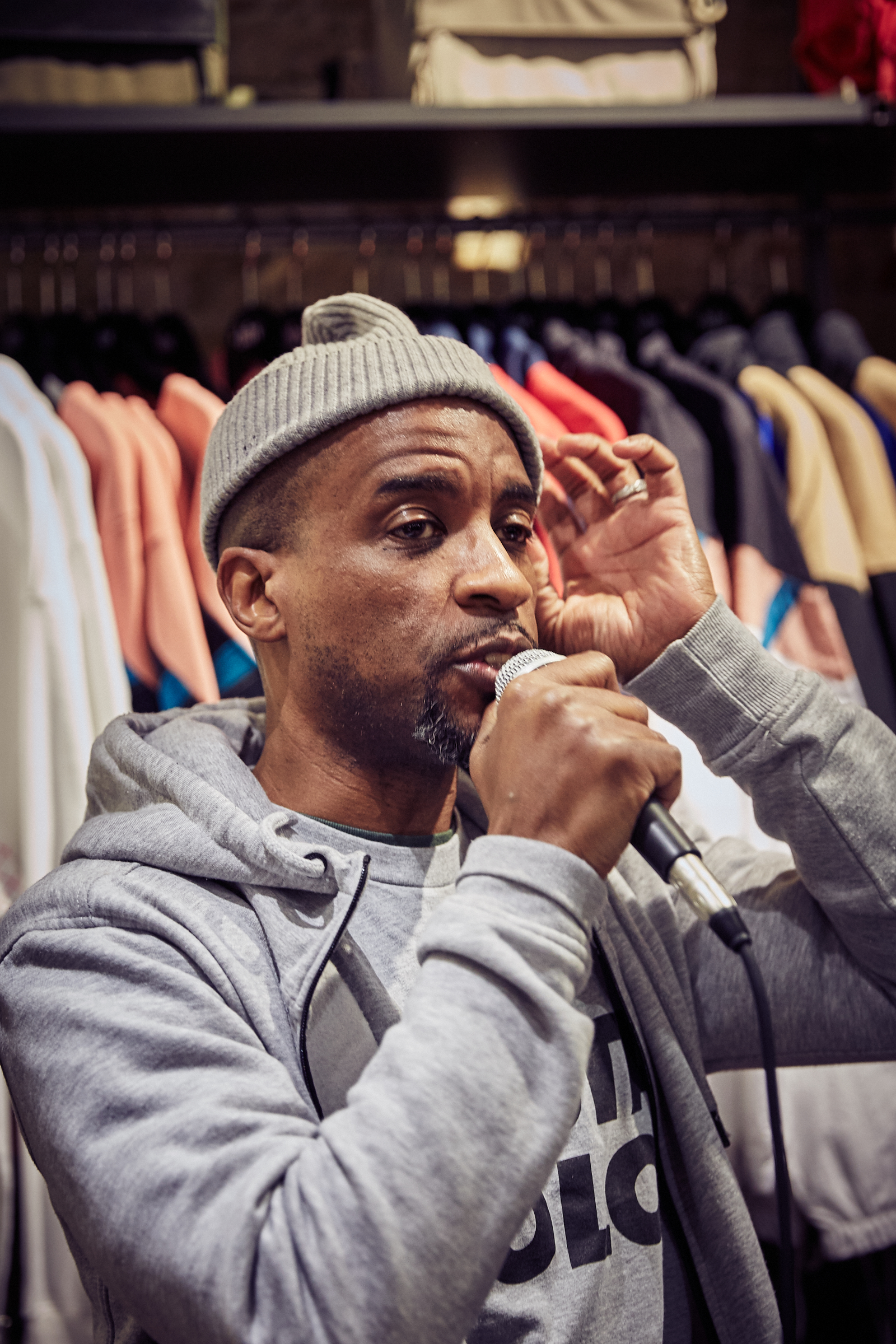
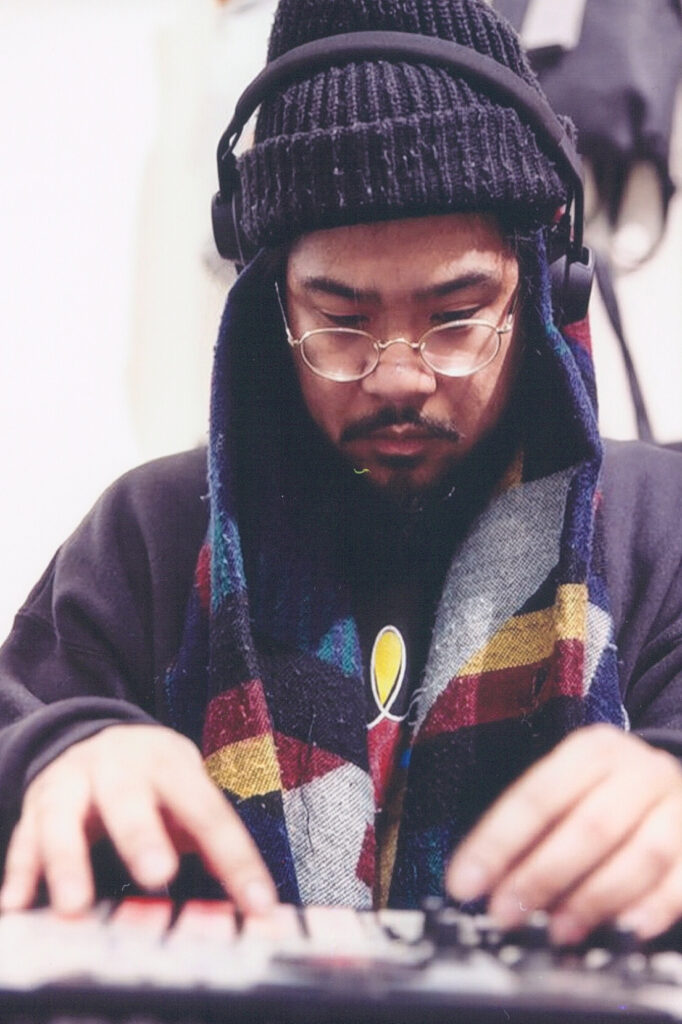
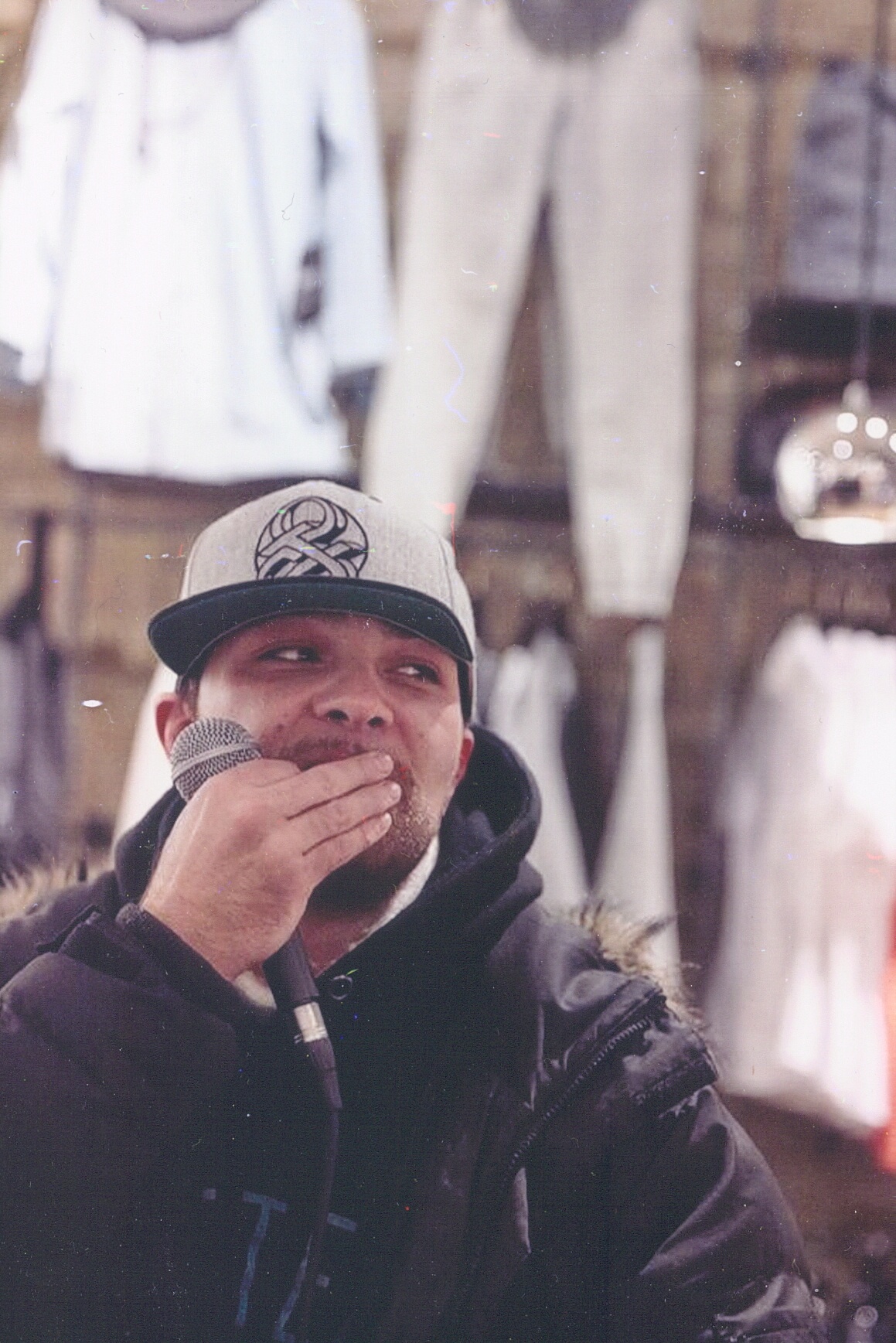
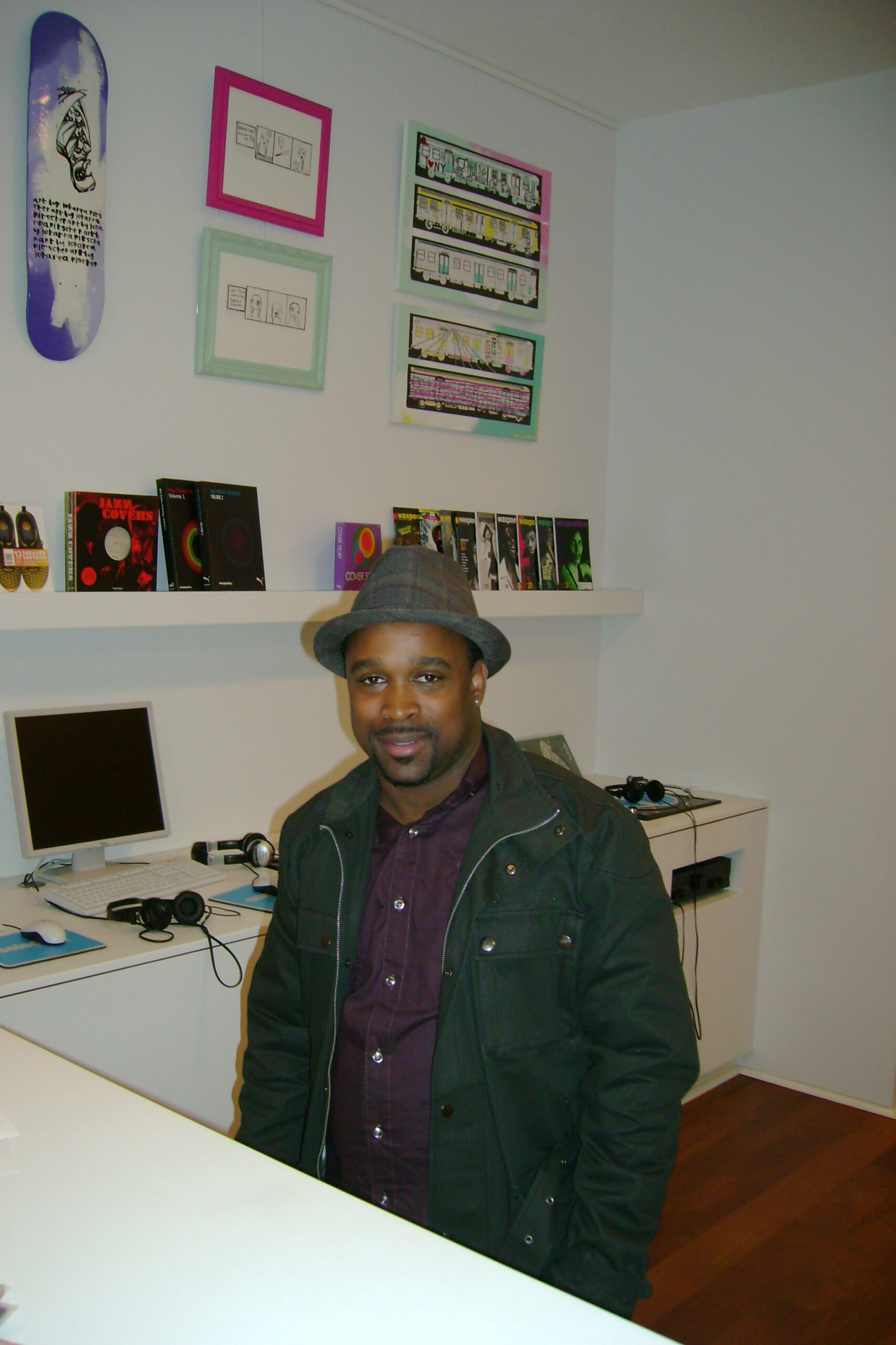
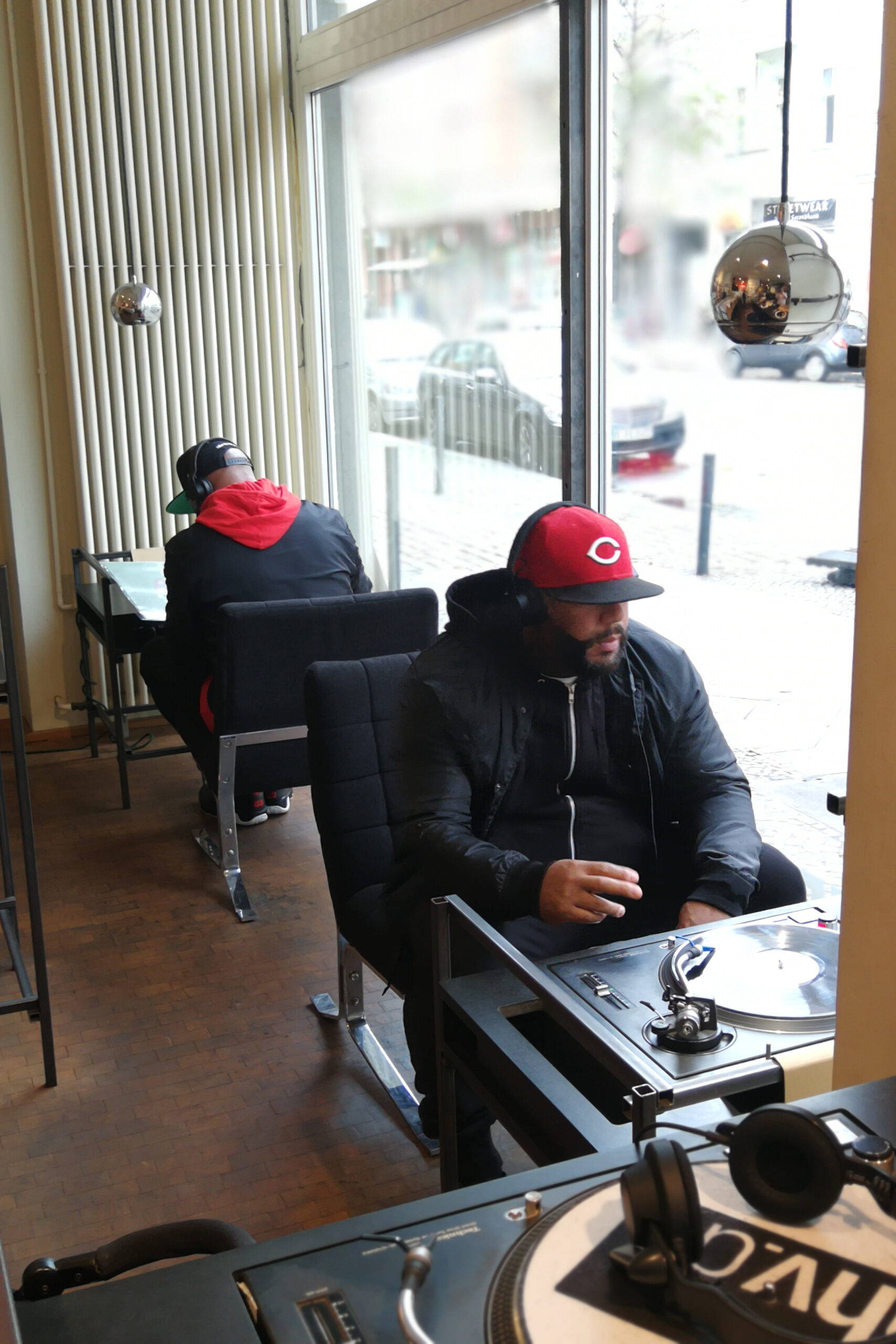
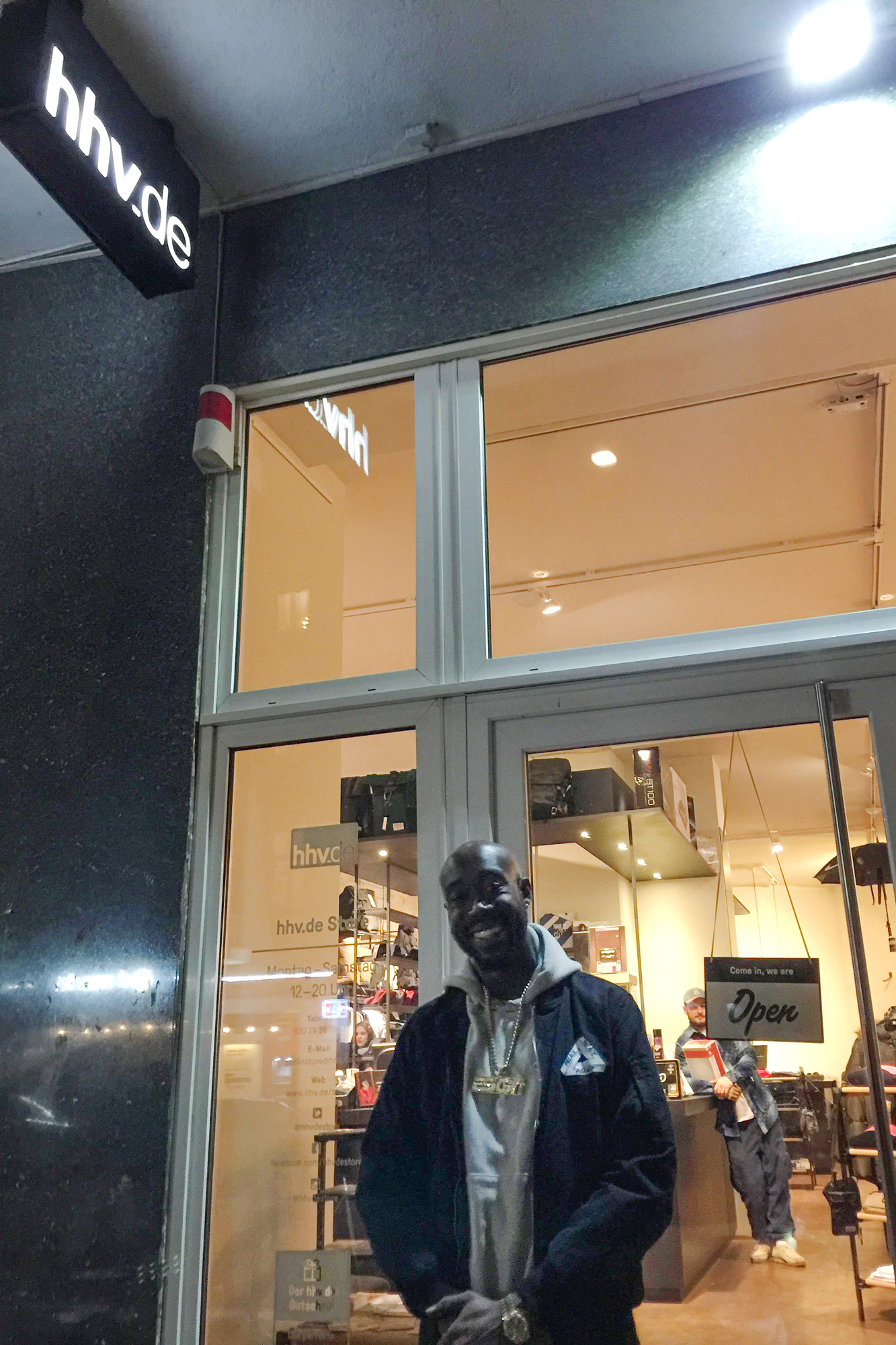
Well-known artists have also been guests at our gigs. These include Eloquent, Audio88 and Yassin, Schaufel und Spaten, Shacke One, The Might Mocambos, eMC, Pete Rock, Blackalicious, Apollo Brown and MF DOOM.
With our Diggin’ Days, we have created an El Dorado for record collectors in Berlin for a few days every year, with tons of crates filled with vinyl and DJs who know how to practice their craft on the 1210s.
Thoughts about the future
This year marks our twentieth anniversary and we at HHV want to celebrate it with a bang. We are planning festivities at our HHV store in Berlin-Friedrichshain, as well as cooperations with brands that will result in some very special products. And when it comes to vinyl, we will be picking a record for every year from 2002 to 2022 and offering it in an exclusive 20 Years of HHV edition. So keep an eye out for this on all our channels.
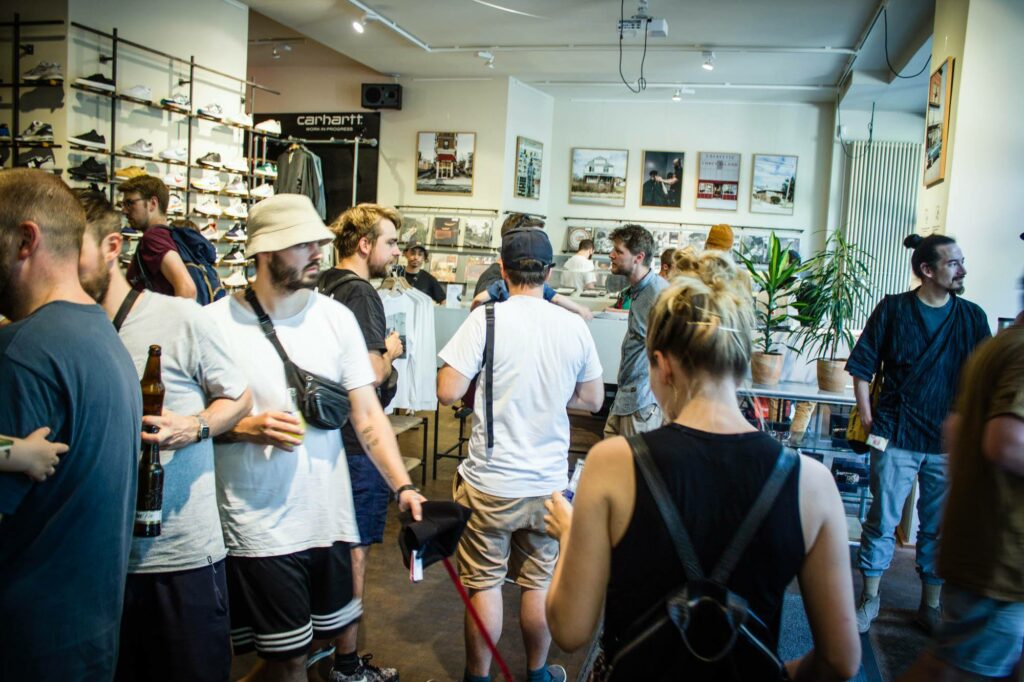
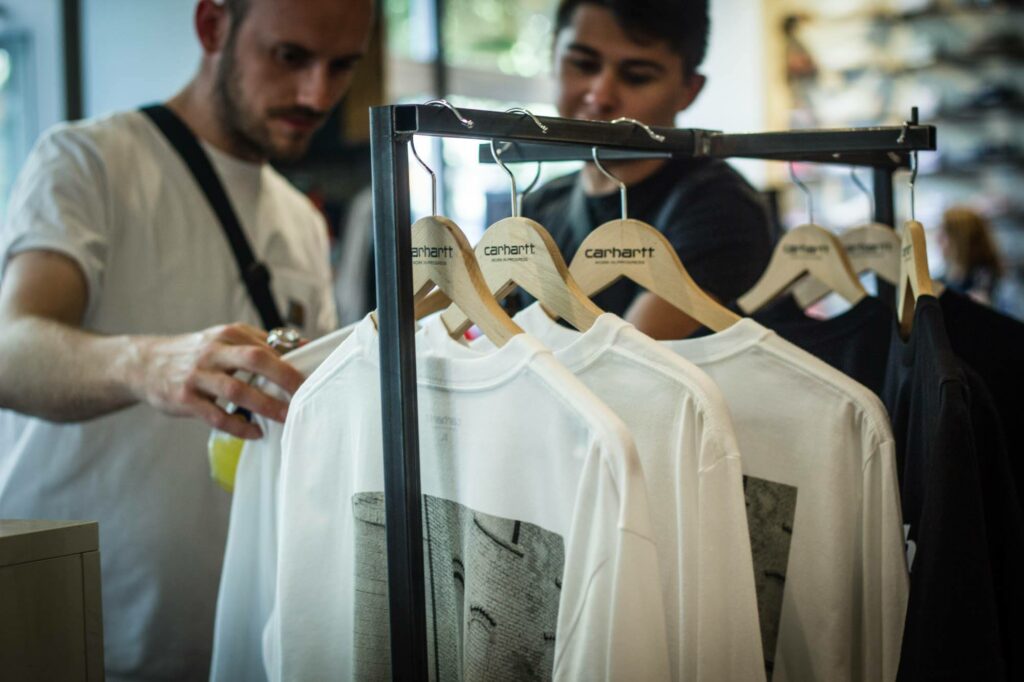
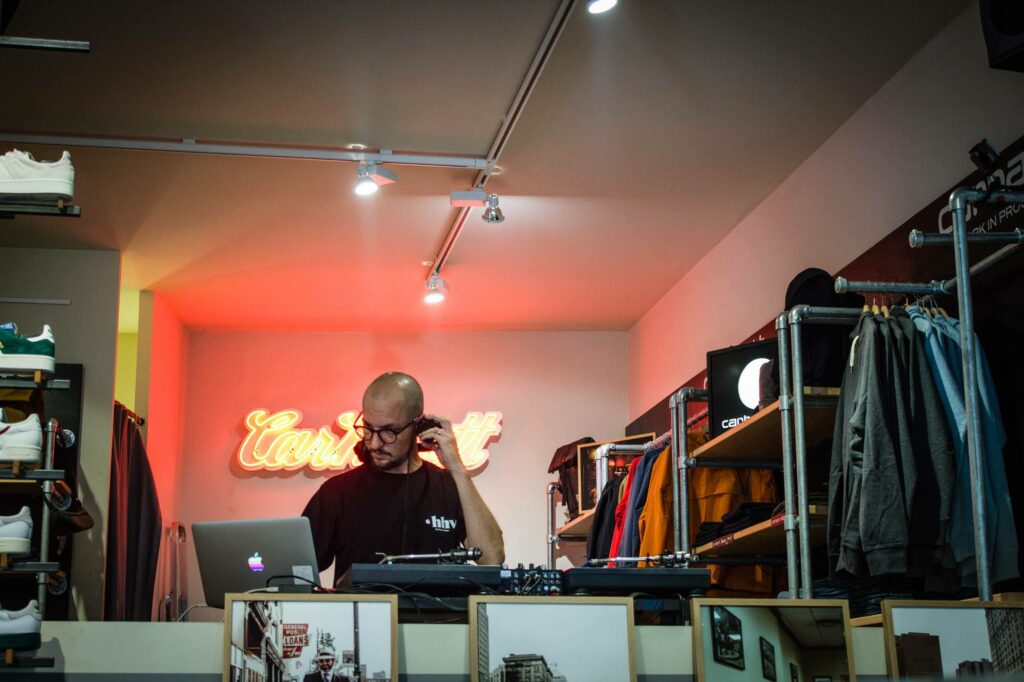
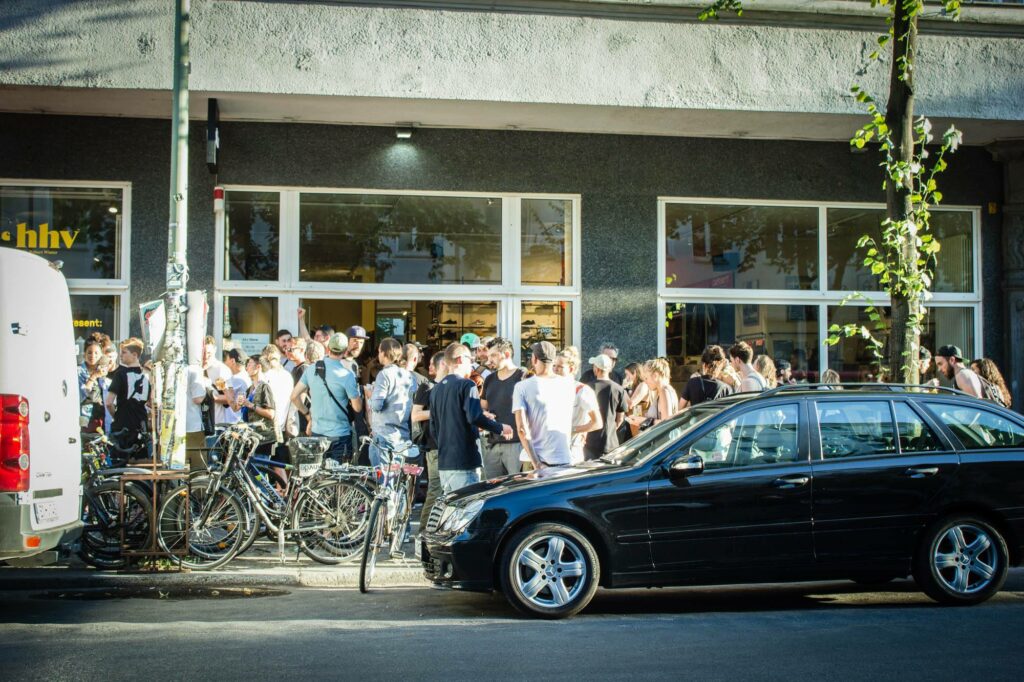
And if you are looking for HHV’s recipe for success, you will find it in our passion and love for the cause, which we have preserved over the years. Anyone who suspects an »empire« behind HHV will be disappointed, because it’s just normal people who work here. People who have created one of the world’s leading vinyl and fashion outlets completely through their own efforts and without any investors. So raise your glasses!



